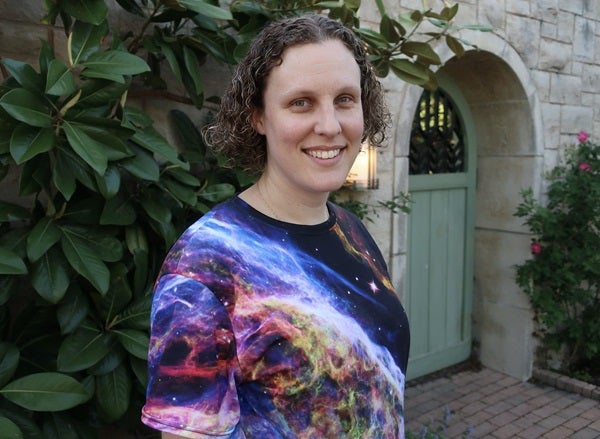Beginning in 2024, astronomers at the Vera C. Rubin Observatory in Chile will experience a deluge of data: The facility’s 8.4-meter telescope will scan the entire night sky every three days, allowing astronomers to track changes in the position and brightness of billions of stars, planets, and asteroids.
“It’s going to be a remarkable discovery engine for almost every area of astrophysics,” says Meredith Rawls, age 36, a research scientist at the University of Washington in Seattle. “There will be terabytes [of data] every night, which is terrifying, but also cool — and we need to turn that into useful data products for the scientific community.”
That’s where Rawls comes in — she’s writing software to process those reams of raw data and highlight the useful bits. The algorithms she writes compare the pictures of the night sky, pixel by pixel, to identify the objects that have changed and moved.
The task is made far more difficult by the ever-increasing number of satellites in low Earth orbit launched by firms like SpaceX. “They show up as bright streaks on astronomical images, and they are a lot brighter than anybody really expected,” says Rawls. Companies and governments are planning to launch constellations with thousands, tens of thousands, or even hundreds of thousands of satellites. “We’re kind of at a sea-change moment for our utilization of low-Earth-orbit space,” says Rawls.
As a member of the American Astronomical Society’s Committee on Light Pollution, Radio Interference, and Space Debris, Rawls has worked with some operators to make their satellites more astronomy friendly. For instance, SpaceX has covered their craft with dark paint to reduce their reflectivity. But Rawls is still concerned that the overall practice is unsustainable. “We don’t know exactly what the ramifications are going to be,” she says, noting that satellites can contribute to atmospheric pollution as well as light pollution that interferes with animal behavior.
Beyond that, the massive surge in low-Earth-orbit satellites will change the way we all experience the night sky. “Everyone at some point in their life has looked up at the sky,” she says. “The sense of awe that drew me to astronomy in the first place is a really good reminder about how everything is connected.”
Make sure to explore our full list of 25 rising stars in astronomy. Check back each week for a new profile!
To get the latest astronomical news and observing content delivered directly to your door, subscribe to Astronomy magazine today!










